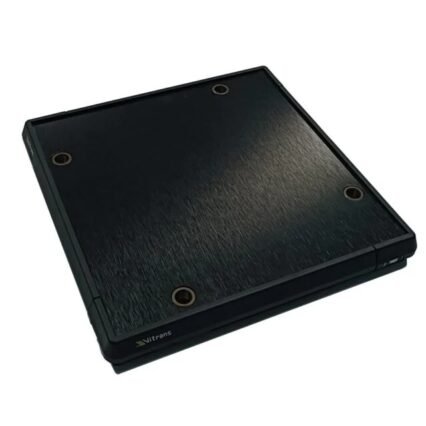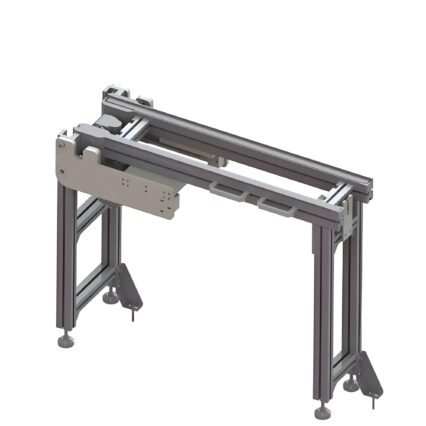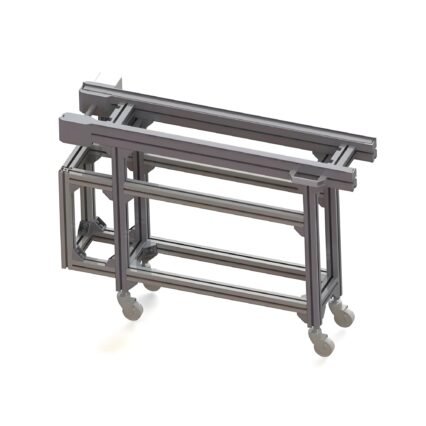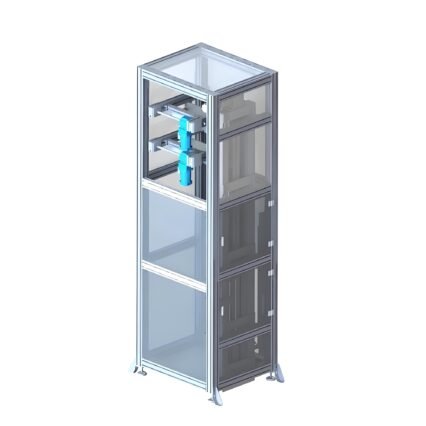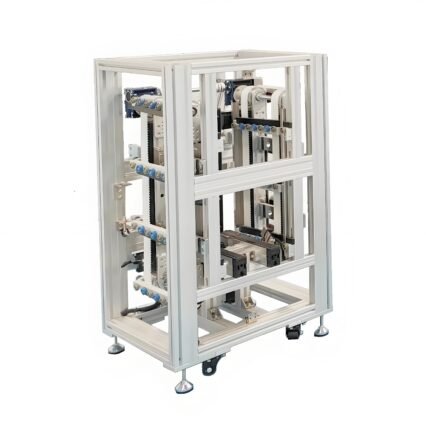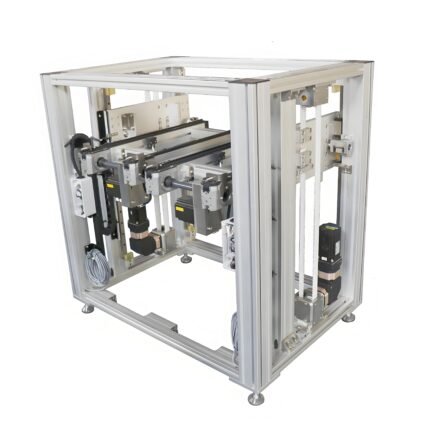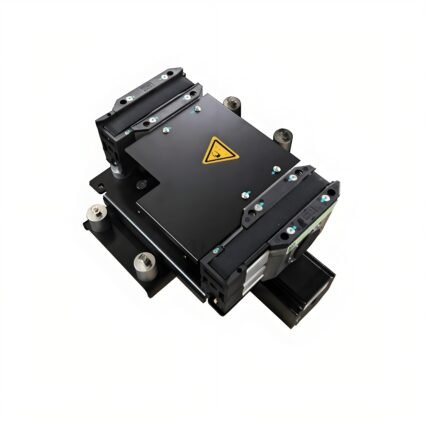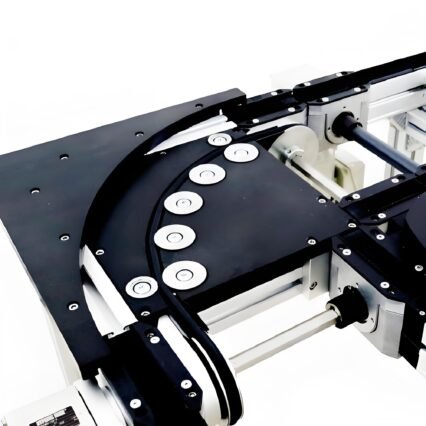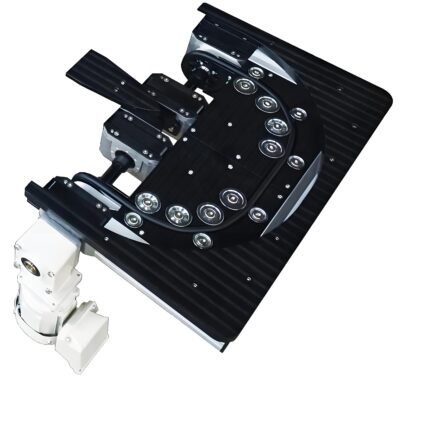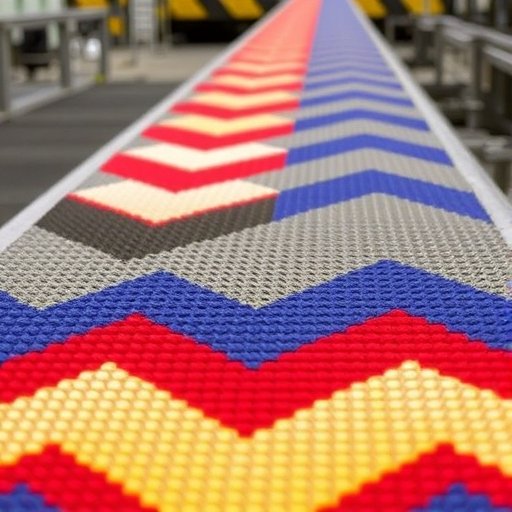Оглавление
- Введение
- Understanding Conveyor Belt Materials
- Factors Influencing Conveyor Belt Material Selection
- Popular Conveyor Belt Materials
- 4.1 Резиновые конвейерные ленты
- 4.2 PVC Conveyor Belts
- 4.3 Polyurethane Conveyor Belts
- 4.4 Fabric Reinforced Conveyor Belts
- 4.5 Metal Conveyor Belts
- Selecting the Right Conveyor Belt Material for Your Application
- Vitrans: A Leading Conveyor Belt Manufacturer
- Common Questions on Conveyor Belt Material Selection
- Заключение
- Сравнительная таблица
1. Введение
Conveyor belts are an integral part of many industries, helping in the efficient transport of materials through production lines, warehouses, and distribution centers. One of the key considerations when setting up a conveyor system is choosing the right conveyor belt material. The material selected impacts the belt’s durability, cost-effectiveness, and performance. Whether you’re moving lightweight packages, heavy-duty bulk materials, or fragile products, selecting the appropriate conveyor belt material is essential for optimizing workflow and minimizing downtime.
In this article, we will explore the factors that influence conveyor belt material selection, review popular materials used in conveyor belts, and offer insights into how to choose the best material for your specific needs. We’ll also introduce Витранс, a prominent conveyor manufacturer based in Dongguan, China, known for its high-quality modular паллетные конвейеры.
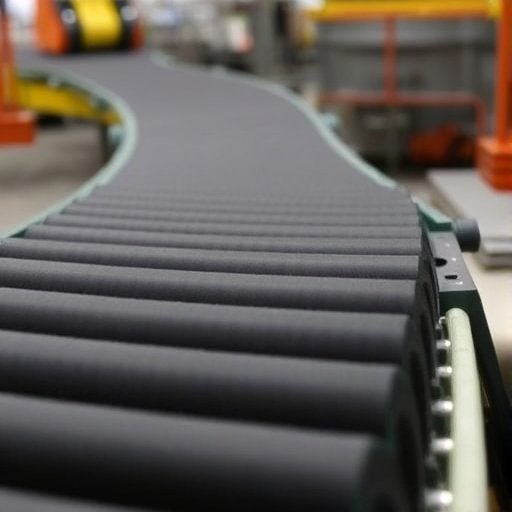
2. Understanding Conveyor Belt Materials
A conveyor belt is typically a continuous loop of material used to transport goods and materials from one point to another. The belt must be strong, durable, and capable of handling the specific materials that need to be transported. Conveyor belts can be made from a variety of materials, including rubber, PVC, polyurethane, and metal, with each material offering distinct advantages for different industrial applications.
Understanding the properties and benefits of each material is critical to selecting the right conveyor belt for your needs. Below are some of the most common materials used in conveyor belts and their unique advantages.
3. Factors Influencing Conveyor Belt Material Selection
Choosing the right conveyor belt material involves considering several key factors that can affect the performance and longevity of the system. These factors include:
1. Load Type and Weight
The type and weight of the material being transported play a significant role in material selection. Heavier loads require stronger and more durable belts, such as rubber or fabric-reinforced belts, while lighter items can be transported using PVC or polyurethane belts.
2. Temperature Range
Different conveyor materials perform better at certain temperature ranges. For instance, rubber belts may degrade at high temperatures, while metal belts can handle extreme heat, making them suitable for high-temperature applications such as metal foundries.
3. Chemical Resistance
In industries like pharmaceuticals, food processing, and chemical manufacturing, the conveyor belts often need to resist exposure to chemicals, oils, and other harsh substances. Materials like PVC and polyurethane offer excellent chemical resistance.
4. Environmental Conditions
The operating environment can affect the belt material’s longevity. Humid or wet conditions require materials that are resistant to water absorption and rust, while belts in outdoor settings may need UV resistance.
5. Belt Speed
Higher belt speeds typically require more robust materials that can handle the stress without wear or damage. Materials like rubber are ideal for high-speed applications due to their ability to withstand tension and abrasion.
6. Maintenance Requirements
Some materials require more frequent maintenance than others. Rubber and PVC belts tend to need less maintenance than metal belts, which may require lubrication and occasional replacement of components.
7. Cost Considerations
While metal belts are durable, they are often more expensive than rubber or PVC options. Choosing the right balance between cost and performance is crucial for long-term efficiency and profitability.
4. Popular Conveyor Belt Materials
4.1 Rubber Conveyor Belts
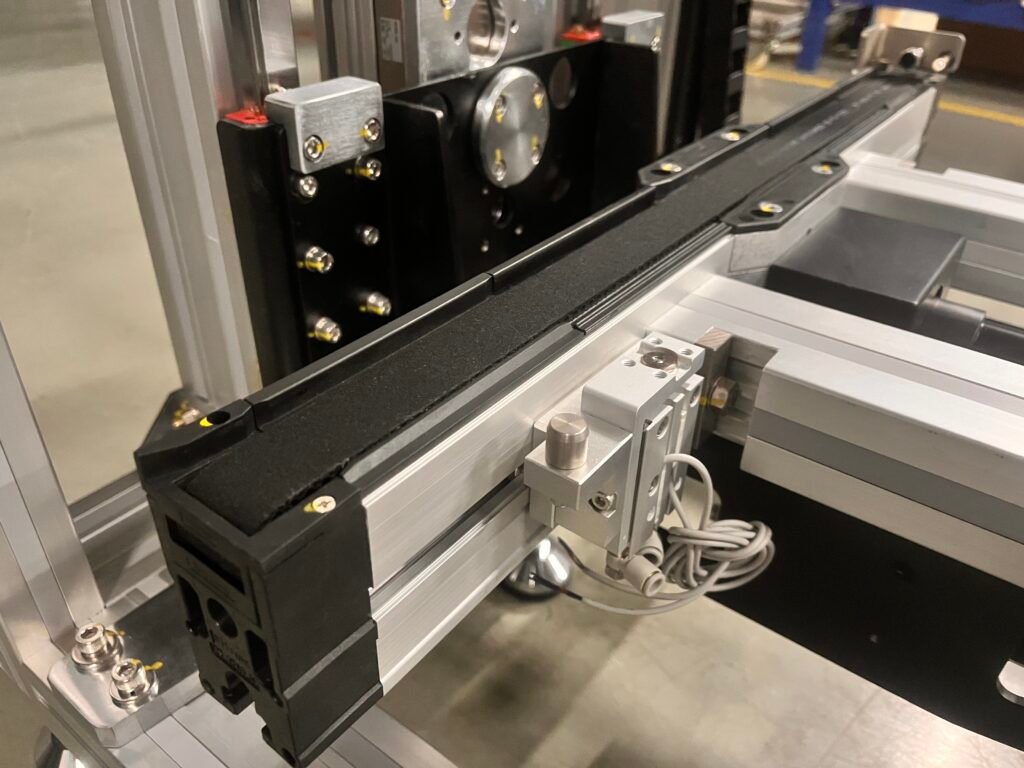
Аннотация: Rubber conveyor belts are one of the most common types of belts used in industrial applications. Known for their durability and flexibility, rubber belts are ideal for a wide range of industries, including mining, manufacturing, and material handling.
Преимущества:
- Долговечность: Resistant to wear and tear, making it suitable for heavy-duty applications.
- Гибкость: Rubber belts are flexible and can bend around pulleys easily.
- Высокая грузоподъемность: Suitable for transporting heavy materials.
- Heat Resistance: Some rubber belts can withstand moderate heat levels, making them suitable for certain industrial environments.
Приложения:
- Погрузочно-разгрузочные работы в тяжелых условиях
- Mining and quarry operations
- Agriculture and bulk material transport
4.2 PVC Conveyor Belts
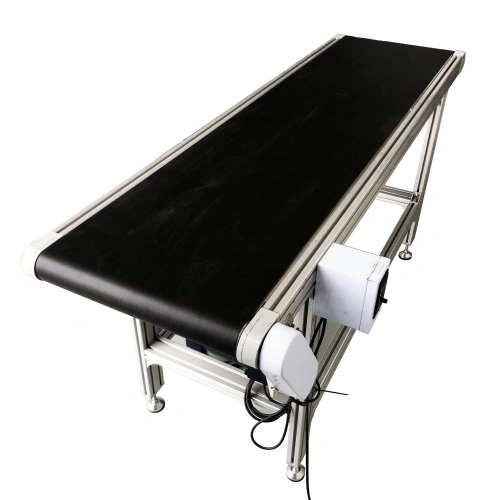
Аннотация: PVC (Polyvinyl Chloride) belts are lightweight and easy to clean, making them ideal for applications in food processing, packaging, and light-duty material handling.
Преимущества:
- Экономически эффективный: PVC belts are generally less expensive than rubber or polyurethane belts.
- Smooth Surface: Ideal for handling small and lightweight items.
- Easy Maintenance: Simple to clean and maintain, making them suitable for food processing and pharmaceuticals.
- Chemical Resistance: Обеспечивает превосходную устойчивость к маслам, химикатам и другим загрязнениям.
Приложения:
- Пищевая промышленность
- Упаковочные линии
- Сборка электроники
4.3 Полиуретановые конвейерные ленты
Аннотация: Полиуретановые (PU) конвейерные ленты известны своей высокой прочностью и гибкостью. Эти ленты подходят для применения в тех случаях, когда требуется высокая стойкость к истиранию.
Преимущества:
- Устойчивость к истиранию: Отлично подходит для работы с абразивными материалами, такими как гравий и песок.
- Chemical Resistance: Идеально подходит для химических производств благодаря своей устойчивости к маслам и растворителям.
- Высокая грузоподъемность: Может выдерживать средние и тяжелые нагрузки.
- Стойкость к высоким температурам: Подходит для умеренных и высоких температур.
Приложения:
- Автомобильная и обрабатывающая промышленность
- Упаковочные и сортировочные линии
- Химическая и пищевая промышленность
4.4 Конвейерные ленты, армированные тканью
Аннотация: Ремни, армированные тканью, изготавливаются путем соединения слоев ткани (например, полиэстера или нейлона) с резиной, ПВХ или полиуретаном. Такие ремни обладают высокой прочностью на разрыв и гибкостью, что делает их пригодными для широкого спектра применений.
Преимущества:
- Прочность: Обеспечивает высокую прочность на разрыв для тяжелых условий эксплуатации.
- Долговечность: Выдерживает длительный износ.
- Настройка: Может быть адаптирован для различных отраслей промышленности и применений.
- Допустимая температура: Выпускается в различных исполнениях для работы в различных температурных диапазонах.
Приложения:
- Горнодобывающая и тяжелая промышленность
- Автомобильная промышленность и упаковка
- Обработка сыпучих материалов
4.5 Металлические конвейерные ленты
Аннотация: Металлические конвейерные ленты часто используются в высокотемпературных и тяжелых условиях эксплуатации. Такие ленты изготавливаются из нержавеющей стали, оцинкованной стали или других металлов и предназначены для работы в экстремальных условиях.
Преимущества:
- Чрезвычайная долговечность: Выдерживает высокие температуры, большие нагрузки и жесткие условия эксплуатации.
- Устойчивость к коррозии: Ремни из нержавеющей стали устойчивы к ржавчине и коррозии.
- Открытая структура: Идеально подходит для областей применения, требующих воздушного потока или охлаждения, таких как выпечка и металлообработка.
Приложения:
- Обработка пищевых продуктов (например, выпечка)
- Металлообработка и термообработка
- Сверхмощные производственные условия
5. Selecting the Right Conveyor Belt Material for Your Application
Чтобы выбрать подходящий материал для конвейерной ленты, выполните следующие действия:
1. Оцените материалы, которые вы перевозите
Учитывайте размер, вес и абразивность материалов. Для более тяжелых и абразивных материалов может потребоваться резиновая или армированная тканью лента, в то время как с более легкими материалами могут справиться ленты из ПВХ или полиуретана.
2. Учитывайте факторы окружающей среды
Если ваша конвейерная система работает в условиях высоких температур или агрессивной химической среды, вам больше подойдут такие материалы, как металл, резина или полиуретан.
3. Выбор в зависимости от нагрузки и скорости ремня
Для высокоскоростных операций резиновые ремни обеспечивают превосходную производительность. При меньших нагрузках или низких скоростях более экономичными решениями могут быть ремни из ПВХ и полиуретана.
4. Бюджет и обслуживание
Хотя резиновые и металлические ремни могут иметь более высокую первоначальную стоимость, их долговечность может сделать их более экономически эффективными в долгосрочной перспективе. Учитывайте общую стоимость жизненного цикла, включая обслуживание и замену.
6. Vitrans: A Leading Conveyor Belt Manufacturer
Витранс является известным производителем конвейеров, расположенным в Дунгуань, Китайспециализирующаяся на высококачественных модульных паллетных конвейерных системах. Имея многолетний опыт в области планирования и автоматизации производственных линий, компания Vitrans предлагает широкий спектр конвейерных решений для удовлетворения потребностей различных отраслей промышленности. Ассортимент продукции включает в себя зубчатые ленты, плоские ленты, цепи с плоским верхом и роликовые конвейеры.
Продукция Vitrans включает в себя:
-
 Конвейерный поддон
Конвейерный поддон -
 Подъемные ворота
Подъемные ворота -
 Тяговые ворота
Тяговые ворота -
 Подвесной конвейерный подъемник | Элеватор
Подвесной конвейерный подъемник | Элеватор -
 Подъемник паллет с коротким временем цикла LP/L
Подъемник паллет с коротким временем цикла LP/L -
 Сервоприводный подъемник паллет LP/B
Сервоприводный подъемник паллет LP/B -
 ET2/B Поперечный блок для поддонов
ET2/B Поперечный блок для поддонов -
 Кривая ленточного конвейера KV2/90 градусов
Кривая ленточного конвейера KV2/90 градусов -
 Кривая ленточного конвейера KV2/180 градусов
Кривая ленточного конвейера KV2/180 градусов
Vitrans’ commitment to quality, coupled with its customer-focused service, has made it a trusted partner for companies looking for reliable and efficient conveyor systems.
7. Common Questions on Conveyor Belt Material Selection
1. What is the most durable conveyor belt material?
Rubber and metal belts are generally the most durable materials, with rubber being suitable for heavy-duty operations and metal belts excelling in extreme conditions, such as high temperatures and heavy loads.
2. Can PVC conveyor belts be used for heavy materials?
PVC conveyor belts are typically used for lighter materials. However, for medium-heavy applications, you can use reinforced PVC belts, but they may not be as durable as rubber or fabric-rein
forced belts for very heavy loads.
3. Are polyurethane conveyor belts resistant to chemicals?
Yes, polyurethane conveyor belts are known for their excellent chemical resistance, making them suitable for industries like chemical processing and pharmaceuticals.
8. Заключение
Choosing the right conveyor belt material is crucial for ensuring the smooth operation of your conveyor system. The best material depends on several factors, including the weight and type of materials being transported, environmental conditions, and the required durability. Rubber, PVC, polyurethane, fabric-reinforced, and metal belts all have their advantages and applications.
For businesses looking for high-quality conveyor systems, Витранс offers an excellent range of products designed to meet the needs of various industries. Their modular pallet conveyor systems, including toothed belts, flat belts, and more, provide flexible and reliable solutions for a wide range of applications.
9. Сравнительная таблица
| Материал | Преимущества | Приложения | Cost |
|---|---|---|---|
| Резина | Durable, high load capacity, flexible | Heavy-duty material handling, mining | Moderate |
| ПВХ | Lightweight, easy to clean, cost-effective | Food processing, packaging | Low |
| Polyurethane | Abrasion and chemical resistant | Automotive, packaging, chemical industries | Moderate |
| Fabric Reinforced | High tensile strength, durable | Bulk material handling, mining | High |
| Metal | Extreme durability, corrosion resistant | Food processing, metalworking | High |
By selecting the appropriate conveyor belt material, businesses can ensure that their conveyor systems operate efficiently and with minimal maintenance.

